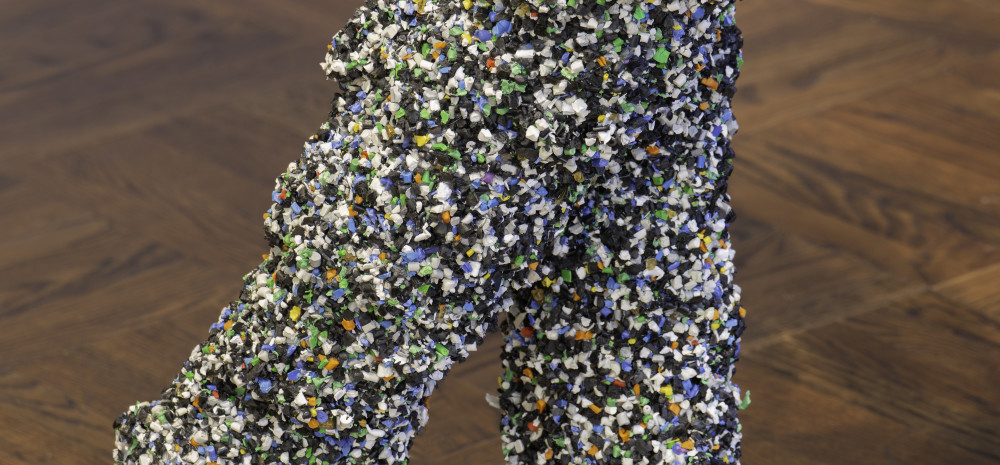Frank Boban (b. 1972, San Mateo, CA, USA)
Liquidate – Environmental Bankruptcy, 2019
Recycled Plastic, Mannequins, Paper, Hot Glue, Respirator, Welding Goggles, and Welding Hood
5’ x 5’ x 6’
Environmentalism is most often associated with saving the planet, a task so monumental that it becomes insurmountable; so why bother? Even worse are arguments surrounding small creatures on the brink of extinction and the conclusion; who cares? The critical discussion that we seem to be avoiding is the symbiotic relationship between the environment and people. Although nature will go on without us, we cannot go on without nature. Environmentalism is ultimately a life preserver.
Liquidate – Environmental Bankruptcy addresses the moral and environmental bankruptcy, which a by-product of our consumerism, which the United States is a leader of. According to Greenpeace, about ten percent of the 260 million tons of plastic produced annually makes its way into the ocean. Plastics are being eaten by sea creatures of all sizes, from surface dwelling creatures to those living on the ocean floor. Crustaceans living in the Mariana Trench in the Pacific, which is the deepest point on earth, have been found to be consuming plastic. As plastics become an ever increasing part of the aquatic food chain, it is only a matter of time before people begin consuming plastic laden sea creatures. This is a problem that will continue to return back to its source unless it is addressed.
My inspiration for this installation was to draw parallels between the environment and people, and that our own well being is connected to good stewardship of the planet. My installation represents the duality of man and sea creatures with a man and child who are being slowly consumed by plastic. This self inflicted destruction draws attention to the need for awareness and a call to action. Liquidate makes clear that plastic in the oceans will be eventually consumed by us. The problem of plastic pollution is so monumental that it does seem insurmountable, but we must address it. Small actions by many can draw awareness and action so that we can minimize our plastic foot-print and our detrimental impact on the environment.
